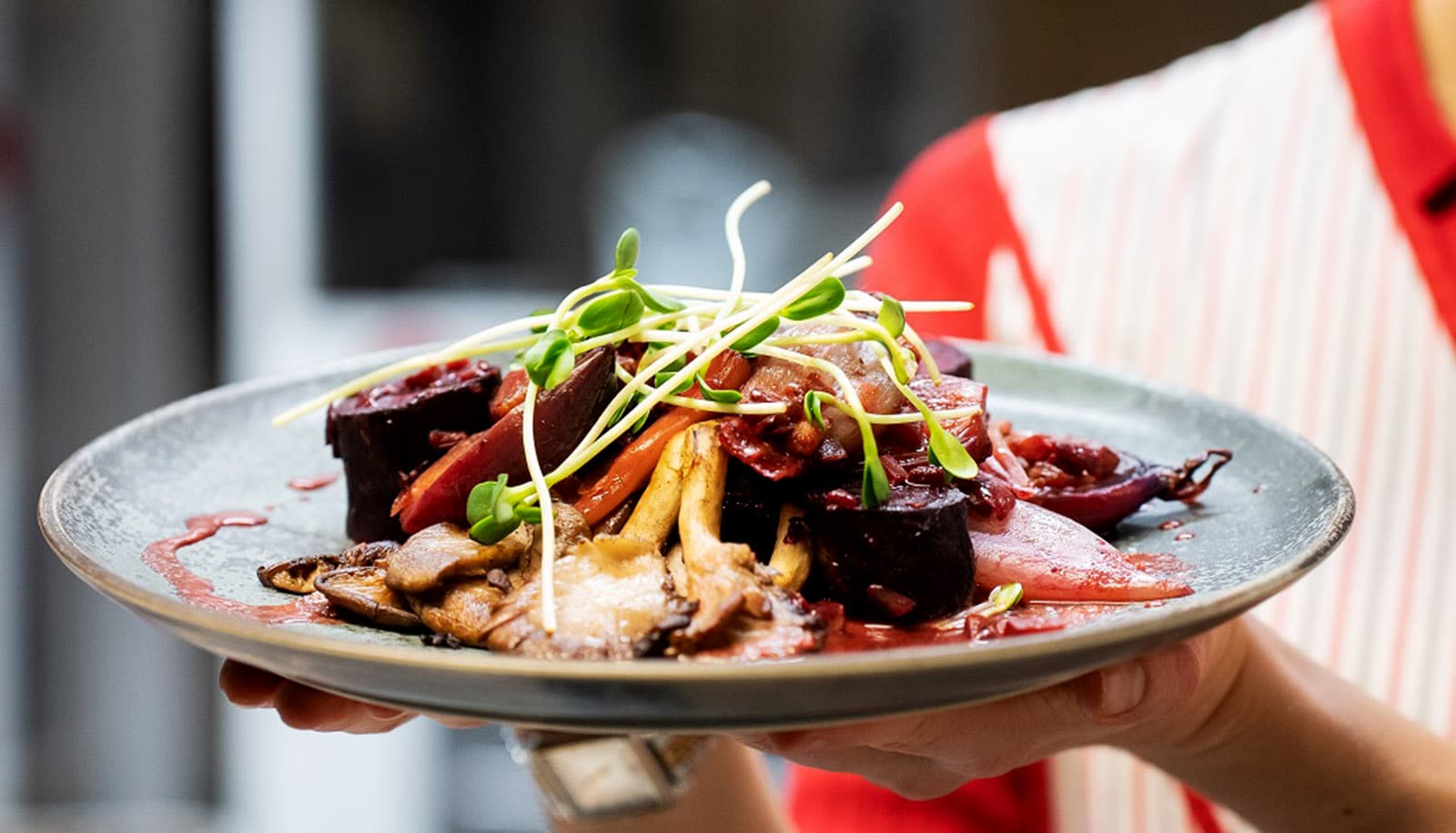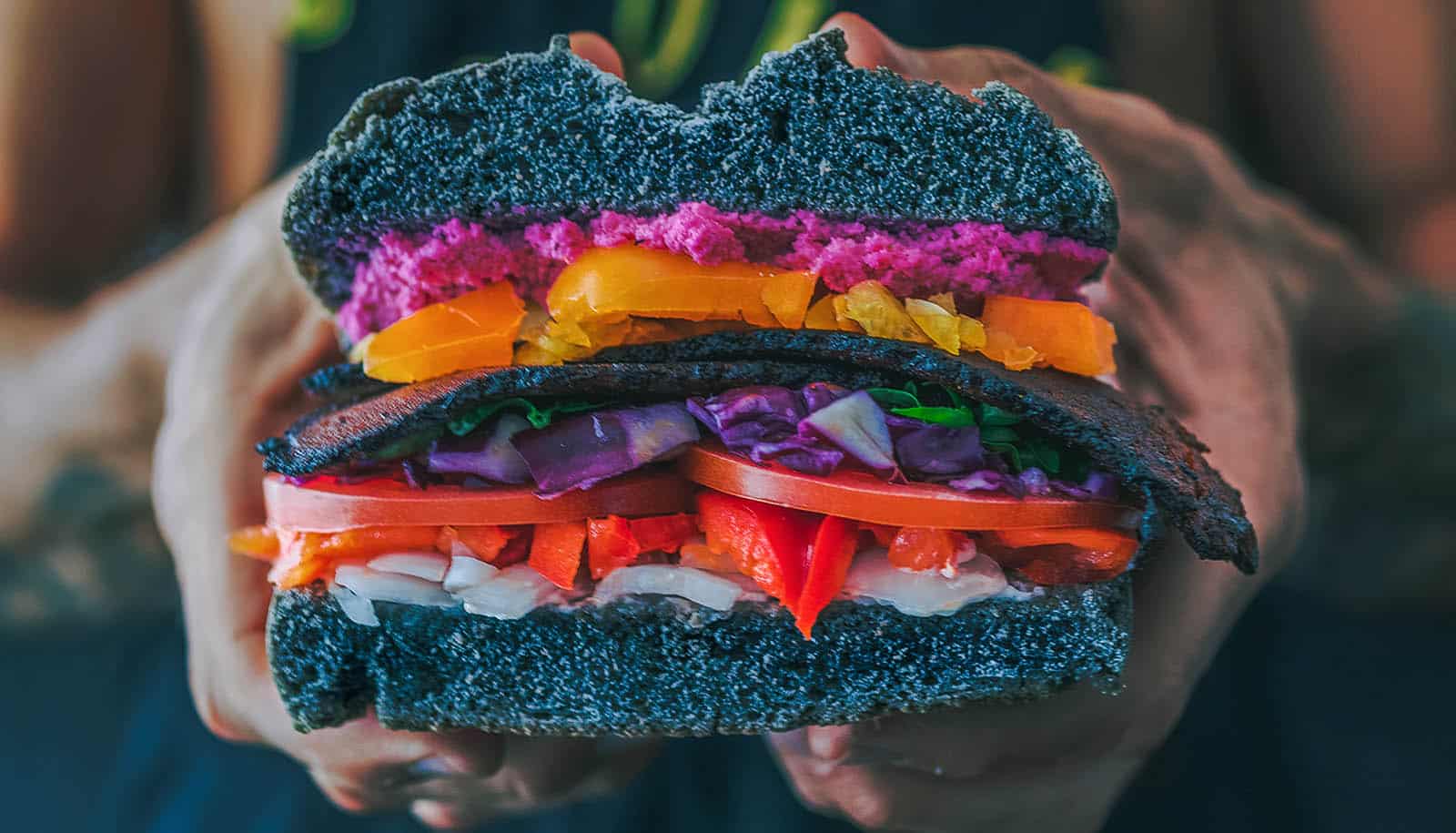Boosting the umami is key to pulling off a delicious and plant-based Christmas dinner, says a food engineer.
Food scientist Charlotte Vinther Schmidt, postdoctoral researcher at the University of Copenhagen in the food science department, focuses on exploiting the umami taste potential of sustainable foods.
Schmidt says it’s key for dishes to have enough of the fifth basic taste: umami.
Umami is one of the five basic tastes, alongside sweet, sour, salty, bitter. The umami taste comes from the free amino acid glutamate and certain free nucleotides. Foods like cheese, mushrooms, meat, and sun-ripened tomatoes are high in umami.
“Meat is known for its powerful umami taste. If you plan on doing away with meat in your Christmas dinner, you can boost the umami taste of the plant-based ingredients by umami synergy, and in doing so, bring umami taste to food items that don’t normally taste of umami,” says Schmidt.
“You can achieve the umami synergy effect by combining foods with glutamate with foods that have a high content of specific other substances called nucleotides. While nucleotides don’t give off umami taste per se, they boost the umami taste greatly when combined with glutamate in the same mouthful. A general rule of thumb is that 1-part glutamate + 1-part nucleotides gives an umami taste intensity equivalent to 8 parts glutamate.”
We are familiar with this effect from famed pairings like champagne and oysters, ham and cheese, and bacon and eggs.
To keep the flavors seasonal, Schmidt suggests using traditional yuletide ingredients that aren’t animal based, like red cabbage, cranberries, and spices such as cloves, cinnamon, and allspice.
“Overall, one should think about what makes a classic Christmas dinner taste so good; for example, what basic tastes are present, what textures, what aromas? By dividing the meal into subcomponents like this, you can recreate it in another meal using completely different ingredients. Doing so will deliver the same food properties and stimulate the same senses, and secure the overall deliciousness and satisfaction of the meal,” she says.
Schmidt has put together a plant-based Christmas dinner based on the principles above. The meal includes:
Sweet and umami miso potatoes: Baked layered yellow and sweet potatoes in light miso, yeast flakes, cloves, and allspice.
“The first component on the plate is a reimagined, ‘umamified’ version of caramelized potatoes. The umami synergy occurs when the glutamate-rich miso interacts with the touch of glutamate in potatoes and yeast flakes, the latter which contain both glutamate and nucleotides. The spices help to evoke classic Christmas aromas,” says Schmidt.
Whole shallots and sliced beets: The vegetables are simmered in the extract from vegetables and red wine.
“The unique thing about the onions is that when cooking their extract contains a number of so-called kokumi peptides, which give mouthfeel and continuity which is enhanced by umami taste from the fried oyster mushrooms which contain both glutamate and nucleotides and are very umami in taste. together with the onions which caramelize and become sweeter—they giving rise to our two basic taste cravings, sweetness and umami,” she says.
Fried oyster mushrooms: They’re prepared with caramelized onions and beets in red wine.
Frying mushrooms, such as oyster mushrooms, at high dry heat will develop what’s called the Maillard aromas, which can further improve perceived umami taste. These aromatic substances are triggered in a chemical reaction between free amino acids and sugars when food is browned, an aroma that we know from freshly baked bread or seared meat.
Fresh Christmas salad: Finely sliced cabbage, endive, chopped apples, and fresh sunflower shoots served with a dressing with clementine juice, light miso, and walnut oil, topped with roasted walnuts and cranberries.
The entire dinner takes between 60-90 minutes to prepare. Recipes are available here.
Schmidt communicates the science behind umami and palatability, among other things on umamipairing.com and @umamipairing on Instagram.
Source: University of Copenhagen


